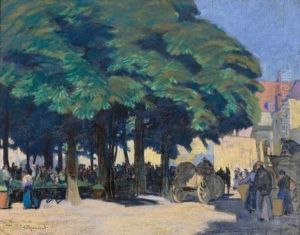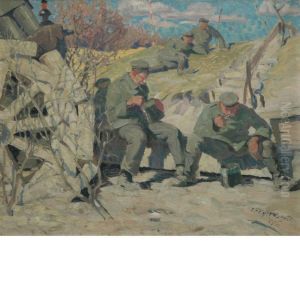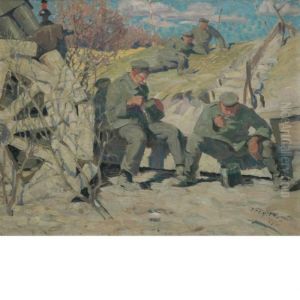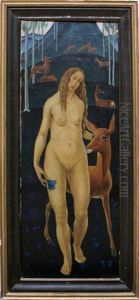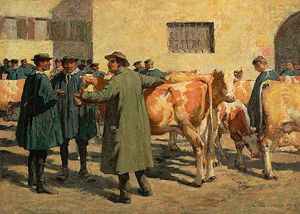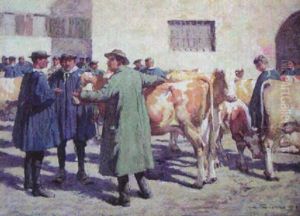Erich Feyerabend Paintings
Erich Feyerabend was a German artist and illustrator, born in 1892 in Berlin, Germany. His artistic journey began in the early 20th century, a period rich in innovation and the evolution of art styles. Feyerabend's work spans a variety of mediums, including painting, graphic arts, and illustration, showcasing his versatility and adaptability to different artistic expressions. Throughout his career, Feyerabend demonstrated a keen interest in the aesthetic and stylistic movements of his time, yet he managed to cultivate a unique style that distinguished his work.
He studied art in Berlin, where he was exposed to the burgeoning art scene of the early 1900s. This period was marked by significant movements such as Expressionism and Dada, which undoubtedly influenced Feyerabend's development as an artist. However, he did not confine himself to the trends of his time. Instead, he explored various themes and techniques, ranging from traditional illustrations to more avant-garde expressions, making him a versatile and adaptive artist.
During his career, Feyerabend became well-known for his illustrations, contributing to books, magazines, and other publications. His illustrations often reflected a keen observation of society and a subtle critique of its norms, encapsulated within his distinctive style that combined elements of realism and caricature. Beyond his illustrations, Feyerabend's paintings also reveal his deep engagement with the world around him, portraying scenes of everyday life with a unique blend of realism and abstraction.
Erich Feyerabend's contribution to the art world extends beyond his individual works. Through his exploration of different styles and mediums, he participated in the broader dialogues of art and society during a period of significant change. His ability to adapt and innovate within his practice has left a lasting legacy on the art community, inspiring future generations to explore and push the boundaries of artistic expression. Feyerabend passed away in 1971, leaving behind a rich body of work that continues to be studied and appreciated for its creativity and insight into the early 20th-century art world.
